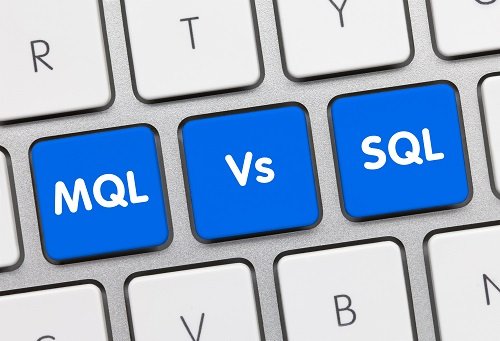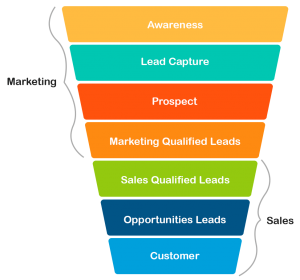
Blog
MQLs vs. SQLs – What’s the Difference?

Generating quality leads is vital to every cybersecurity vendor. Yet studies show that 61% of B2B markets struggle in doing so.
 The process of gaining a qualified lead can be challenging. First, businesses need to be familiar with the lead funnel. The funnel consists of contacts, leads (a.k.a. prospects), MQLs, SQLs, (forecasted) sales opportunities, and customers (i.e., closed-won opportunities).
The process of gaining a qualified lead can be challenging. First, businesses need to be familiar with the lead funnel. The funnel consists of contacts, leads (a.k.a. prospects), MQLs, SQLs, (forecasted) sales opportunities, and customers (i.e., closed-won opportunities).
Contacts are essentially records of individuals in your CRM. You may not know them and they may not know you. But once they open and click on an email, or visit your website, or register for a webinar, contacts transition into leads. Not warm leads… yet. That’s where MQLs come in.
What Is an MQL?
MQLs, or marketing-qualified leads, are warm leads that have expressed interest in what your company has to offer based on responding to your marketing initiatives. The more they interact with your company, the higher their lead score. Once their lead score achieves a certain threshold in your marketing automation system (you’ve got a marketing automation system… right?), then the lead automatically converts into an MQL.
There are many ways that smart cybersecurity marketing teams engage contacts and leads to generate MQLs. Here are just a few:
- Visiting and exploring your website
- Downloading high-value content
- Registering for and attending webinars
- Clicking on social media posts
- Clicking on banner ads
- Watching explainer videos and live videos
- Signing up for newsletters
- Completing “Contact Us” or “Request a Demo” forms
- Stopping by your booth at trade shows
Once an MQL is created, it’s (usually automatically) routed to the sales department (usually to sales development reps, or SDRs) to take action. The goal is to convert as many MQLs as possible into SQLs.
Before we talk about SQLs, it’s important to reflect on why we’re generating MQLs in the first place. It’s because your company has only so many SDRs and there are only so many hours in the day. You want your SDRs to focus on warm leads to maximize their time – not cold or lukewarm leads who only download one white paper or attended one webinar. The nice thing about lead scoring is you can adjust your MQL scoring threshold so you’re not giving your SDRs to few or too many leads.
What Is an SQL?
SQLs, or sales-qualified leads, are MQLs that have been validated by SDRs (or other sales professionals). The SDR contacts the person associated with the MQL, usually by phone but could also be email, to qualify them and, if qualified, to schedule a call with the account executive who handles their region. Often, the SDR is asking BANT-related questions, including:
- Budget: Do you have budget for the product or service you’re interested in?
- Authority: Do you have purchase authority? Or do you influence the decision maker?
- Need: Can you tell me more about your potential need for our product or service?
- Timeline: Are you looking to acquire your chosen solution in the next 30 days?
Requirements for what defines an SQL differ by cybersecurity sales organization. Some require favorable responses to all four BANT questions. Some merely classify all MQLs as SQLs when they’re assigned to SDRs. Others have their own methodologies.
In any case, the next objectives are to convert as many SQLs into forecastable (i.e., fully qualified) sales opportunities and then ultimately to closed-won deals.
Need Help Generating MQLs?
The most common way cybersecurity vendors generate MQLs is by promoting high-value content. Examples include:
- White papers
- Definitive Guide or custom eBooks
- Graphical eBooks (“gBooks”)
- Survey reports
- Cyberthreat Defense Report sponsorship
- Key Economic Impact Reports
The CyberEdge Advantage
Wish you could create high-value content that engages buyers at every stage of the funnel? Ready to boost your lead generation with qualified, opt-in leads you can actually afford? You’re in the right place. CyberEdge has the bench strength to develop content that speaks to every step of the buyer journey—and the content syndication power to put it in front of the right prospects. From first touch to qualified lead, we’ve got you covered. Contact us today for a personalized consultation and discover the CyberEdge difference.


